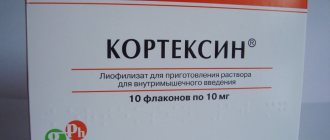BUPIVACAIN
Directions for use and doses
Bupivacaine should only be administered by physicians experienced in administering local anesthesia or under their supervision.
To achieve the required degree of anesthesia, the minimum possible dose must be administered. Under no circumstances should accidental intravascular administration of the drug be allowed. Before and during administration of the drug, it is recommended to carry out an aspiration test. The drug must be administered slowly, at a rate of 25-50 mg/min or in fractions, maintaining continuous verbal contact with the patient and monitoring the heart rate. During epidural administration, a dose of 3-5 ml of bupivacaine with epinephrine is pre-administered. With accidental intravascular administration, a short-term increase in heart rate occurs; with accidental intrathecal administration, a spinal block occurs. If toxic signs occur, administration is stopped immediately.
Below are approximate doses that need to be adjusted depending on the depth of anesthesia and the patient's condition.
Infiltration anesthesia:
5-60 ml of the drug at a concentration of 2.5 mg/ml (12.5-150 mg bupivacaine) or 5-30 ml of the drug at a concentration of 5 mg/ml (25-150 mg bupivacaine).
Diagnostic and therapeutic blockade
: 1-40 ml of the drug at a concentration of 2.5 mg/ml (2.5-100 mg bupivacaine), for example,
blockade of the trigeminal nerve
1-5 ml of the drug (2.5-12.5 mg bupivacaine) and
cervicothoracic ganglion sympathetic trunk
10-20 ml of the drug (25-50 mg bupivacaine).
Intercostal blockade
: 2-3 ml of the drug at a concentration of 5 mg/ml (10-15 mg bupivacaine) per nerve, not exceeding the total number of 10 nerves.
Major blocks
(eg, epidural block, sacral or brachial plexus block)
: 15-30 ml of the drug at a concentration of 5 mg/ml (75-150 mg bupivacaine).
Anesthesia in obstetrics
(for example, epidural and caudal anesthesia for natural childbirth):
6-10 ml of the drug at a concentration of 2.5 mg/ml (15-25 mg bupivacaine) or 6-10 ml of the drug at a concentration of 5 mg/ml (30- 50 mg bupivacaine).
Every 2-3 hours, repeated administration of the drug at the initial dose is allowed.
Epidural anesthesia for caesarean section:
15-30 ml of the drug at a concentration of 5 mg/ml (75-150 mg bupivacaine).
Epidural analgesia as an intermittent bolus:
Initially, 20 ml of the drug is administered at a concentration of 2.5 mg/ml (50 mg bupivacaine), then every 4-6 hours, depending on the number of damaged segments and the patient’s age, 6-16 ml of the drug at a concentration of 2.5 mg/ml (15 -40 mg bupivacaine).
Epidural analgesia as a continuous infusion
(for example, post-operative pain):
| Blockade type | Concentration | Volume | Dose |
| Epidural administration (at the lumbar level): | |||
| Bolus 1 | 2.5 mg/ml | 5-10 ml | 12.5-25 mg |
| Infusion | 2.5 mg/ml | 5-7.5 ml/h | 12.5-18.75 mg2 |
| Epidural injection (thoracic level): | |||
| Bolus 1 | 2.5 mg/ml | 5-10 ml | 12.5-25 mg |
| Infusion | 2.5 mg/ml | 2.5-5 ml/h | 6.25-12.5 mg |
| Epidural insertion (natural birth): | |||
| Bolus 1 | 2.5 mg/ml | 6-10 ml | 15-25 mg |
| Infusion | 2.5 mg/ml | 2-5 ml/h | 5-12.5 mg |
1If the drug was not administered as a bolus within the previous hour.
2 The maximum recommended daily dose should not be exceeded (see below).
During surgery, additional administration of the drug is possible.
When using narcotic analgesics simultaneously, the dose of bupivacaine should be reduced.
During long-term administration of the drug, the patient should be regularly monitored for blood pressure, heart rate, and other signs of potential toxicity. If toxic effects occur, administration of the drug must be stopped immediately.
During surgery, additional administration of the drug is possible.
When using narcotic analgesics simultaneously, the dose of bupivacaine should be reduced.
With prolonged administration of the drug, the patient must regularly monitor blood pressure, heart rate and other signs of potential
Maximum recommended doses
The maximum recommended single dose, calculated at 2 mg/kg body weight, is 150 mg over four hours for adults. This is equivalent to 60 ml of the drug at a concentration of 2.5 mg/ml (150 mg bupivacaine) and 30 ml of the drug at a concentration of 5 mg/ml (150 mg bupivacaine).
The maximum recommended daily dose is 400 mg. However, when calculating the total daily dose, it is necessary to take into account the patient's age, physique and other relevant conditions.
Children aged 1-12 years
Regional anesthesia should be performed by a physician who has experience working with children and knows the appropriate administration technique.
The dosages for children given in the table are approximate. There may be variability. In children with high body weight, it is usually necessary to reduce the dose based on ideal body weight. Generally accepted anesthesia guidelines should be used when determining anesthesia techniques and taking into account individual patient characteristics.
The minimum dose necessary to achieve sufficient anesthesia should be administered.
| Concentration, mg/ml | Volume, ml/kg | Dose, mg/kg | Onset of action, min | Duration of action, h | |
| Acute pain | |||||
| Caudal epidural anesthesia | 2,5 | 0,6-0,8 | 1,5-2 | 20-30 | 2-6 |
| Lumbar epidural anesthesia | 2,5 | 0,6-0,8 | 1,5-2 | 20-30 | 2-6 |
| Thoracic epidural anesthesiab) | 2,5 | 0,6-0,8 | 1,5-2 | 20-30 | 2-6 |
| Regional block (eg, small nerve block and infiltration) | 2,5 | 0,5-2 | |||
| 5 | 0,5-2 | ||||
| Peripheral nerve blocks (eg, ilioinguinal/iliohypogastric nerve blocks) | 2,5 | 0,5-2 | A) | ||
| 5 | 0,5-2 | A) | |||
a) the onset and duration of peripheral nerve block depends on the nature of the block and the dose
b) for thoracic epidural anesthesia, the drug is administered in increasing doses until the desired level of pain relief is achieved.
The dose in children is calculated based on 2 mg per kg of body weight.
In order to prevent the drug from entering the vascular bed, an aspiration test should be performed before and during the administration of the main dose. The drug should be administered slowly, dividing the total dose into several injections, especially during lumbar and thoracic epidural anesthesia, while continuously monitoring vital signs.
Peritonsillar infiltration anesthesia in children from 2 years of age
: at a dose of 7.5 mg and 12.5 mg per tonsil at a bupivacaine concentration of 2.5 mg/ml.
Blockade of the ilioinguinal/iliohypogastric nerves in children from 1 year of age:
0.1-0.5 ml/kg at a bupivacaine concentration of 2.5 mg/ml, which is equivalent to 0.25-1.25 mg/kg body weight.
For children aged 5 years and older, the drug can be administered at a bupivacaine concentration of 5 mg/ml, which is equivalent to 1.25-2 mg/kg.
Penis block:
0.2-0.5 ml/kg at a bupivacaine concentration of 5 mg/ml, which is equivalent to 1.0-2.5 mg/kg.
Data on epidural anesthesia in children (bolus or continuous administration) are limited.
Cooking method
If it is necessary to obtain a solution with a concentration of 2.5 mg/ml, it is possible to dilute the drug with a concentration of 5 mg/ml only with compatible solvents, such as sodium chloride solution 0.9% for injection, since after dilution the properties of the drug may change, which can lead to precipitation. Dilution should be carried out only by qualified personnel with mandatory visual inspection before use. It is possible to use only transparent solutions without visible particles.
The drug solution is intended for single use only.
With intrathecal administration
Bupivacaine should only be administered by physicians experienced in administering local anesthesia or under their supervision. To achieve the required degree of anesthesia, the minimum possible dose must be administered.
The doses given below are for adults. Dose selection is carried out individually.
Elderly patients
and
for patients in late pregnancy,
the dose should be reduced.
| Indications for use | Dose, ml | Dose, mg | Start of action | Duration of action |
| Surgical operations on the lower extremities, including operations on the hip joint | 2-4 ml | 10-20 mg | 5-8 min | 1.5-4 hours |
The recommended injection site is at the L3 level.
There is no clinical experience with doses exceeding 20 mg. Before administering the drug, intravenous access must be provided.
Administration is carried out only after confirmation of entry into the subarachnoid space (outflow of clear cerebrospinal fluid from the needle or during aspiration). If the attempt is unsuccessful, only one additional attempt at administration should be made at a different level and in a smaller volume. One of the reasons for the lack of effect may be poor distribution of the drug in the subarachnoid space, which can be corrected by changing the position of the patient.
Children weighing less than 40 kg
Bupivacaine, solution for injection, 5 mg/ml, can be used in children.
The main difference between adults and children is that newborns and infants have a larger volume of cerebrospinal fluid, which requires a relatively higher dose per kilogram of body weight to achieve the same degree of block compared to adults.
Regional anesthesia should be performed by a physician who has experience working with children and knows the appropriate administration technique.
The dosages for children given in the table are approximate. There may be variability. Generally accepted anesthesia guidelines should be used when determining anesthesia techniques and taking into account individual patient characteristics. The minimum dose necessary to achieve sufficient anesthesia should be administered.
| Body weight, kg | Dose, mg/k G |
| <5 | 0.4-0.5 mg/kg |
| 5-15 | 0.3-0.4 mg/kg |
| 15-40 | 0.25-0.3 mg/kg |
Pharmacological properties of the drug Bupivacaine
Local anesthetic of the amide group. The action of bupivacaine develops quickly (within 5–10 minutes), the duration of anesthesia is 3–7 hours. The mechanism of action of bupivacaine is due to the stabilization of neuronal membranes and the prevention of the occurrence and conduction of a nerve impulse. When using bupivacaine for caudal or epidural anesthesia, as well as for blockade of peripheral nerves, its maximum concentration in the blood serum is achieved after 30–45 minutes, after which it gradually decreases after 3–6 hours. About 95% of bupivacaine entering the systemic circulation is associated with blood plasma proteins. Bupivacaine (depending on the route of administration) is distributed in various concentrations in the tissues of the body; the maximum concentration is observed in well-perfused tissues (liver, lungs, heart, brain). Penetrates through the placental barrier, however, due to the high degree of binding of the drug to blood plasma proteins, the concentration ratio in the blood of the fetus and mother is low (0.2–0.4). Metabolized mainly in the liver. The half-life in adults is 2.7 hours (1.2-4.6 hours), in children - 6-22 hours. In elderly people, the half-life also increases.
Special instructions for the use of the drug Bupivacaine
The dose for elderly people and patients with mental retardation, as well as for patients with arterial hypotension, heart block and circulatory failure should be selected individually, taking into account physical status. Since amide anesthetics are metabolized in the liver, caution is required when prescribing bupivacaine to patients with hepatic or renal impairment. Bupivacaine should only be used during pregnancy if absolutely necessary. It is not recommended to use bupivacaine during breastfeeding. During anesthesia, blood pressure, heart rate and respiration should be monitored. Before starting anesthesia, it is necessary to prepare resuscitation equipment and a set of medications to eliminate anaphylaxis, as well as create conditions to facilitate emergency treatment of conditions caused by possible systemic toxicity of the anesthetic.
Overdose of the drug Bupivacaine
Symptoms of acute overdose occur when the concentration of bupivacaine in the blood serum increases, most often with accidental intravascular, intraarticular or subarachnoid administration and are manifested by systemic toxic effects. Emergency measures - ensuring airway patency followed by mechanical ventilation to prevent apnea, catheterization of a vein; when collapse develops, an infusion of vasopressor drugs is administered, and when seizures occur, anticonvulsant therapy is administered.
List of pharmacies where you can buy Bupivacaine:
- Moscow
- Saint Petersburg
Side effects of the drug Bupivacaine
Most often occur due to high serum concentrations of bupivacaine due to overdose, accidental intravascular administration, or impaired metabolism. Possible agitation, anxiety, dizziness, ringing in the ears, blurred vision, tremor, convulsions, depression, drowsiness, coma, respiratory arrest, nausea, vomiting, chills, miosis, inhibition of myocardial contractility with a decrease in cardiac output, conduction disorders, arterial hypotension, bradycardia, ventricular arrhythmia (ventricular tachycardia, ventricular fibrillation), asystole, rarely - allergic reactions (urticaria, itching, erythema, angioedema, including laryngeal edema, tachycardia, sneezing, sweating, drug fever) up to anaphylactic shock. Side effects after epidural and caudal anesthesia can be temporary or permanent: spinal block with hypotension, urinary retention, fecal and urinary incontinence, loss of perineal sensation and impaired sexual function, persistent anesthesia, paresthesia, weakness and paralysis of the lower extremities, headache and pain in the lower extremities. sacral area, meningism, septic meningitis, delayed labor.



